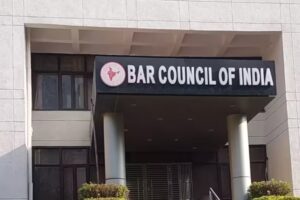
A Varanasi court on Saturday briefly addressed a plea by Hindu petitioners requesting a ban on Muslims walking over the roof of Vyasji’s basement in the Gyanvapi mosque complex. The court scheduled further hearings for August 17.
During the hearing, representatives from the Muslim side were present and are expected to present their arguments on the next date.
The petitioners’ counsel, Madan Mohan Yadav, explained that worship began at Vyasji’s basement on January 31 following a district court order, allowing devotees to view the idols installed there. Yadav noted, “The roof of Vyasji’s basement is quite old and weak. Muslims walk on the roof to pray, which is not appropriate for the worship site. The basement’s roof and pillars are very fragile, and there is a risk of collapse.”
Consequently, the Hindu side has requested a prohibition on Muslims walking on the roof and called for necessary repairs to the roof and pillars.
After considering these concerns, District Judge Sanjeev Pandey set the next hearing for August 17.
Previously, on January 31, the Varanasi district judge instructed local authorities to facilitate Hindu worship rituals inside one of the sealed basements (Vyasji ka tehkhana) within the Gyanvapi mosque complex. This directive followed an Archaeological Survey of India (ASI) report indicating that a Hindu temple existed at the site before the mosque was constructed.
The court specifically ordered that a priest be allowed to perform puja in the southern cellar of the mosque complex.




